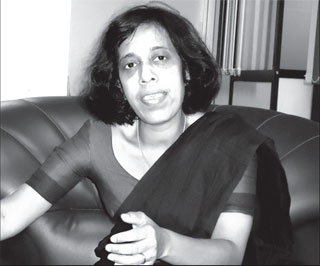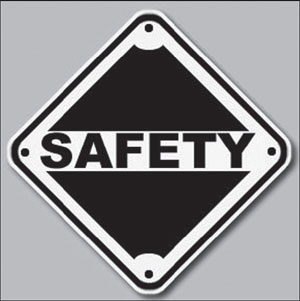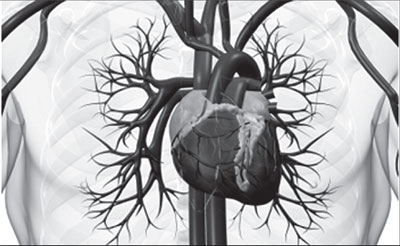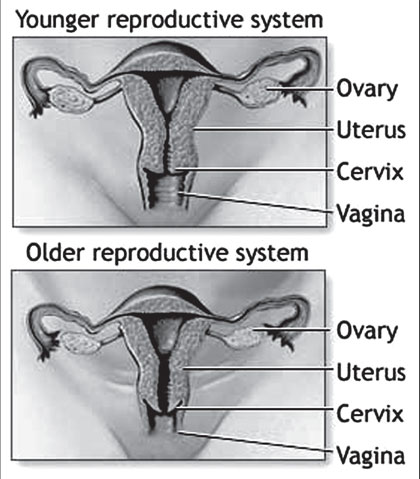|
Health Watch
National Safety week:
Equipping the workforce against hazards
Ishara JAYAWARDANE
Around 1750 - 2000 occupational
accidents have taken place annually
Our workforce is about 8 million - 1/3 of our population.
“We work with the working people” is an apt slogan for the National
Safety Week that was celebrated last week from October 6 to 12.
Unfortunately occupational hazards are an area of life that is not paid
adequate attention in this country.
This is where the National Institute of Occupational Safety and
Health comes in, as an organization intent on raising awareness on this
subject. Daily News met up with National Institute of Occupational
Safety and Health Director General Dr. Champika Amarasinghe to discuss
the workman's woe.
|

Dr. Champika Amarasinghe |
“We want to prevent the occupational accidents and occupational
diseases. The week is designated by the Cabinet of Ministers to prevent
the occupation diseases and occupation related injuries. All of us work
but we never think of our health. Sometimes the work can affect our
health in negative ways. It can cause certain diseases. There can be a
variety of diseases, sometimes eyes can get affected, muscular skeleton
disorders - there can be fractures and injuries even fatalities a range
of diseases and injuries,” said Amarasinghe.
For this week the Institute has organized many programmes. “ This
subject is not basically a subject area where we are dealing with one
category of people - there are many stakeholders: employers and
employees- all these people are responsible for their health while they
are working. So we are working with the employers and employees during
this week with a strategy, mostly our mandate is to create awareness and
research on safety and health. We had a press conference on October 5
and we had an employer- employee commitment programme at
Finlays group of factories at Welisara.
It was like a sports meet with the employees showing their commitment
towards safety and health, it was a programme with quizzes and lots of
activities. There was also another programme for the construction
industry.
 The
construction industry is also identified as a hazardous industry for
employees because a great deal of hazardous work is carried out -
welding and underground working, they are dealing with chemicals they
are exposed to dusty environments, noise places. The
construction industry is also identified as a hazardous industry for
employees because a great deal of hazardous work is carried out -
welding and underground working, they are dealing with chemicals they
are exposed to dusty environments, noise places.
We cater their needs and we identify there are a lot of Occupation
related eye injuries. Eye injuries can happen while you are working.
Hence we did an awareness programme for those in the construction
industry, we did an eye injury detection campaign and we provided them
with spectacles if they required and provided them knowledge on
protectiveness for example how are you going to protect your eyes from
eye injuries. The main seminar was held on October 10.
Hazard is a cause for health injury. That is what we find. You deal
with noise, you work for long years with noise and you might undergo
hearing losses. The noise is the hazard.
* Chemical hazards - people who deal with chemicals (Agriculture and
plantation sector , Paint industry)
* Physical Hazards - the Noise, the temperature, working in the hot
sun, some people work in very cold climates, sometimes they work with
radio active material (cancer hospital, X ray machines)
* Biological Hazards - Small germs in a hospital environment and in
terms doctors and nurses are also exposed to germs.
Bad news stories ‘alter women's stress response’
James Gallagher
Bad news stories, such as those about murder, seem to alter the way
women respond to stressful situations, according to a small study.
Women produced more stress hormones in tests if they had read
negative newspaper stories.
The study on 60 people, published in the journal PLoS One, showed
there was no equivalent effect in men.
Experts said the findings showed “fascinating” differences between
the sexes.
Researchers in Canada compiled newspaper clippings of negative
stories, including accidents and murders, as well as neutral stories
such as film premieres.
Men and women read either negative or neutral stories and then did a
scientific stress test. Levels of the stress hormone, cortisol, were
measured throughout the study.
One of the researchers, Marie-France Marin, from the University of
Montreal, said: “Although the news stories alone did not increase stress
levels, they did make the women more reactive, affecting their
physiological responses to later stressful situations.”
Men's cortisol levels were not affected.
She added: “It's difficult to avoid the news, considering the
multitude of news sources out there.
“And what if all that news was bad for us? It certainly looks like
that could be the case.”
‘Gender puzzle’
The scientists suggested that women may be naturally better at
identifying threats to their children, which affects the way they
respond to stress.
Professor Terrie Moffitt, from the institute of psychiatry at King's
College London, said: “According to self-report studies, women say they
are more ‘stress reactive’ on average than men.
“This study adds fascinating new evidence of change in a stress
hormone after an experimental... challenge.
“Stress researchers confront a real gender puzzle: As a group, women
seem more reactive to stressors, but then they go on to outlive men by
quite a few years.
“How do women manage to neutralise the effects of stress on their
cardiovascular systems? An answer to that question would improve health
for all of us.”
Other experts warned that the study was small so the reported effect
would need further testing.
-BBC
World Egg Day was on October 12:
Why eggs are healthier than ever
Dr Allagamuthu Nandakumar Veterinary Surgeon
It is a common belief that eggs are high in cholesterol, which would
lead to hyper cholestrolemia and then Coronary Heart Disease (CHD). But
the real fact is that eggs have several health benefits including
cholesterol lowering factors.
 Sherwood
Anderson in 1921, in a celebrate story titled “The Egg” wrote: “One
hopes for so much from a chicken and is so dreadfully disillusioned”.
Anderson's views were proved right in the early 70's when clinical
nutritionists condemned eggs for the fear of cholesterol. Over the years
eggs have become the visual icon of high cholesterol and many consumers
have responded positively by limiting or eliminating eggs from their
daily diet. Sherwood
Anderson in 1921, in a celebrate story titled “The Egg” wrote: “One
hopes for so much from a chicken and is so dreadfully disillusioned”.
Anderson's views were proved right in the early 70's when clinical
nutritionists condemned eggs for the fear of cholesterol. Over the years
eggs have become the visual icon of high cholesterol and many consumers
have responded positively by limiting or eliminating eggs from their
daily diet.
Between 1970's and 1980's when people started hearing the dietary
cholesterol message, eggs consumption reduced by 25% all over the world.
The “Avoid eggs” message was so effective that most consumers even today
believed dietary cholesterol is a demon and avoids eggs, as doctors tell
the same nutritional message to avoid eggs to keep the daily consumption
of cholesterol to less than 300 mg in normal person and 183 mg for heart
patients, as recommended by the American Heart Association.
An egg contains 210mg of cholesterol at an average. During the past
thirty years over 200 studies have been conducted by researchers and
have proved that dietary cholesterol has a weak link, at best to blood
cholesterol levels because there is only a relatively small chance in
blood cholesterol level in response to changes in dietary cholesterol
intake.
Perceptions against eggs and dietary cholesterol in this millennium
is becoming under increasing scrutiny, as new research and documentary
evidence that the old beliefs hold up well to the rigorous scrutiny. As
such the dietary guidelines revised in the year 2000 by the American
Heart Association (AHA) no longer make recommendations in eating number
of eggs per week. In the past the AHA recommended limiting eggs to 3-4
per week as a way to help people limit their average daily cholesterol
intake to less than 300 mg. (JAMA; 1999:281:1387-1394)
Issues regarding the effects of menopause
Dr M D P Goonaratne
Consultant Obstetrician and Gynaecologist
President Elect – South Asian Federation of Menopause Societies
The demographic transformation in the world during the latter part of
the last century has a major impact on the population structure in this
21st century. More than half of the six billion people in the world live
in Asia. By 2030 India will be the most populated country of the world
overtaking China. With three of the ten largest populations in it SAARC
region would account for over one quarter of the estimated 9.5 billion
population of the world in 2050. Except for Sri Lanka and Maldives, the
other countries in South Asia have a high population growth. Life
expectancy of the female is higher than that of the male, and ranges
from 45 years in Afghanistan to 75 years in Sri Lanka. These changes
result in an increase in the female population beyond menopause in South
Asia.
|

Coronary Heart disease is the leading cause of death among
postmenopause women. |
Menopause is the cessation of the menstrual cycle in the female,
during which period there is transition from reproductive to post
reproductive period. In Sri Lanka this usually occurs at the age of 50
years as in the developed countries, but at a younger age in many
countries in South Asia. Around menopause formation and release of ova
stops and there is a marked reduction of the hormones produced by the
ovary, which results in estrogen deficiency, which is the main female
hormone.
Estrogen deficiency cause many symptoms like hot flushes, sweating,
irritability, and effects on genito-urinary, cardiovascular systems,
bone and brain among many others. These effects were not a problem for
women about a hundred years ago as many did not live beyond the age of
menopause. But today with higher life expectancy of the female,
one-third of their lives are spent in the postmenopausal age. Total
number of menopausal women in the South Asian region is bout 126 million
which would increase up to 413 million by 2050. Thus the impact of
effects of menopause on the health of this large female population and
the burden on the respective governments will be enormous, and this
would be modified by the health standards, socio economic status,
culture and the outlooks of the county.
World Menopause Day which was on October 18 is instituted by
International Menopause Society and World Health Organization and it is
an occasion for people to be aware and the governments to address the
various issues regarding the effects of menopause.
Women around menopause commonly report many symptoms, like hot
flushes, night sweats, fatigue, headache, irritability, inability to
sleep, and mood changes. In many, these symptoms last for a few months
or years, but in some they continue for many years. These symptoms may
be severe enough to disrupt the day to day activities of some women. In
the west about 80 percent of women experience these symptoms, but in
Asian women they are less common. Which may be related to their dietary
habits, culture and religion.
Lifetime risk
The major complications in the postmenopausal women involves heart,
bone, and brain. Coronary heart disease is the leading cause of death
among postmenopausal women. Women are ten years older than men at the
first manifestation of coronary heart disease. But women have a higher
chance of dying from it than men. Among women, lifetime risk of death
from heart disease is 10 fold greater than that from breast cancer. It
has been shown that women with heart disease take longer to present at
hospital, to diagnose, and to treat, than men. Further women have higher
incidence of post heart attack complications than men, and higher
complications after heart surgery. Prevalence of coronary heart disease
in rural India is half that of urban India, but still twice that of US
and many times that of China.
South Asian women living in US have the highest death rates from
heart disease, 30 percent higher than that of whites and many times
higher than that of Chinese women living in US.
This is in spite of the fact that smoking is rare among South Asian
women. There seems to be a genetic predisposition for an increase risk
of heart disease in these postmenopausal women in the South Asian
region. Some lipid factors that predispose to heart disease are high in
South Asian woman. Further, metabolic syndrome is prevalent in the South
Asian women after menopause and central obesity is a major risk factor
for heart disease. Other risk factors like diabetes, higher honocysteine
levels are common among women in our region. All these evidence leads to
an impending epidemic of coronary heart disease among postmenopausal
women in South Asia.
 Estrogen
deficiency results in marked reduction of bone strength in the vertebral
as well as in the long bones in the female. Osteoporosis where the bone
mineral density is reduced lead to fractures of the vertebra, hip, long
bones of the legs and the arms. 75% of these fractures occur in women
are postmenopausal and 25 percent of women with hip fractures die within
first year. Hip fractures in South Asia are under-diagnosed and
under-treated. Many surveys in the region have shown that 60-75 percent
of postmenopausal women are osteoporotic. It is estimated that this
silent epidemic would lead to about one million hip fractures in this
region in 2050. Economic burden fo treating them would amount to 80
billion US dollars. Estrogen
deficiency results in marked reduction of bone strength in the vertebral
as well as in the long bones in the female. Osteoporosis where the bone
mineral density is reduced lead to fractures of the vertebra, hip, long
bones of the legs and the arms. 75% of these fractures occur in women
are postmenopausal and 25 percent of women with hip fractures die within
first year. Hip fractures in South Asia are under-diagnosed and
under-treated. Many surveys in the region have shown that 60-75 percent
of postmenopausal women are osteoporotic. It is estimated that this
silent epidemic would lead to about one million hip fractures in this
region in 2050. Economic burden fo treating them would amount to 80
billion US dollars.
Difficulties
Many women experience, at surgical or natural menopause, difficulty
in remembering names and other information important for daily life as
well as deficits in fine motor coordination and reaction times and
feelings of depression and anxiety. Inability to learn and consciously
recall new information can be a very early sign of Alzheimer disease,
which is the commonest cause of dementia or loss of memory in
postmenopausal women.
It has been shown by research on animals as well as humans that
estrogen has neurotrophic and neuroprotective effects on brain and
estrogen seems to have a major influence on the hippocampal area which
is involved in memory. Genetic and many non genetic factors play a role
in the formation of Alzheimer's disease which is commoner in female than
in male. Studies on estrogen receptors and neurotransmitter systems
indicate a relationship between estrogen and late onset Alzheimer's
disease.
Alzheimer's disease has a devastating effect on the individual and
the family. There are about 35 million persons with Alzheimer's disease
in the world today. It is estimated that there are about three million
postmenopausal women with the disease in the South Asia and this number
will be at least three times by 2050. Economic burden on caring for
these women will be enormous.
There are many factors in the region that influence the above
complications. Vegetarian diet provides natural plant estrogens.
Recently it was known that a phenolic compound in turmeric can prevent
Alzheimers disease and even useful in treating it. But many South Asians
move away from their healthy diet by overboiling or frying and also
preferring refined carbohydrates. With urbanization there is increased
consumption of fast foods, and lack of exercise which will lead to
increased incidence of metabolic syndrome and heart disease.
Extended families common in early days are seen less and less. Older
women are sent to day care centres, homes for the aged and nursing
homes. Eastern culture and religions which help to ameliorate some
problems of menopause are less cared for. Western culture, diet and
habits which worsen them are embraced with open arms.
There are many common factors the women of menopausal age in South
Asia have to face. Therefore a common front is needed to make people
aware of these problems and prevent them.
The respective governments which are in the low income group need to
address these problems and reduce the economic burden in the future.
Targeting these objectives, Menopause Societies in the SAARC region
joined together and established South Asian Federation of Menopause
Socialites. (SAFOMS). SAFOMS, in addition to promoting research on post
reproductive health, would endeavour to achieve and maintain a better
quality of life among women in the region with liaising with the
respective governments.
Prize winners of Medical Crossword
No 54
Following are the prize winners in Healthwatch Medical Crossword No
54 held last week (Saturday October 6) at the Dev Siri Sevana Elders
Home in Welisara.
Housewives category
1st Prize Entry No 24 Mrs Cadiramanpulle, Colombo 15
2nd Prize Entry No 2 Mrs Srima Wijesinghe, Katugastota
3rd Prize Entry No 26 F C Coomarawel, Nawala
Pensioners Category
1st Prize Entry No 7 S P G C Siriwardena, Colombo 1
2nd Prize Entry No 4 G L Wijesinghe, Kandy
3rd Prize Entry No 6 Alien Peris, Matale
Professionals category
1st Prize Entry No 14 L Mack (Executive), Orugodawatta
2nd Prize Entry No 13 A Mendis (Executive), Moratuwa
3rd Prize Entry No 30 S N Mass (Nurse), Colombo 2
The prizes offered by the sponsors Wish Institute to the winners are
gift vouchers of Rs 6000, Rs 4000 and Rs 3000 to the winners, 1st 2nd
and 3rd.
Daily News and the Wish Institute thank the Dev Siri Sevana Elders
Home Management, specially the Director Chamil Fernando, Sister Manjula
for all the arrangements made for the draw.
Prizes were picked by Home's Centenarian 102 year old Manikam, and
other inmates including S E Kern (86 yrs) Miss Cronenberg (77 yrs)
Christopher Gomez (76 yrs) and Marimattu (86 yrs).
Daily News Editorial and the Crossword sponsors Wish Institute,
congratulate all the winners.
Wish Institute also carried out hearing and eye tests of all the
inmates. |





